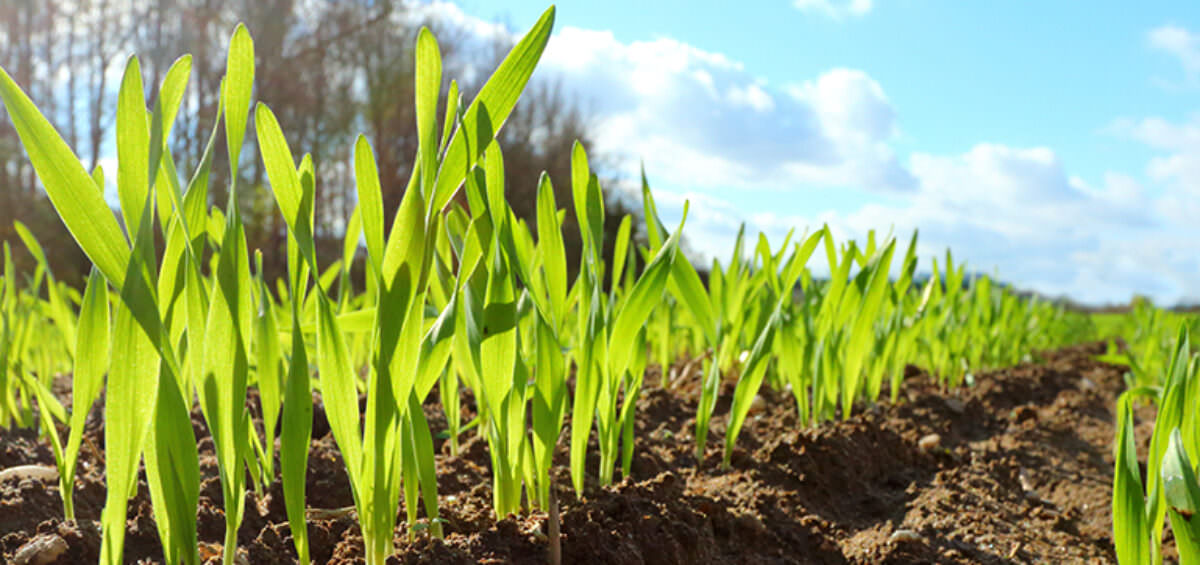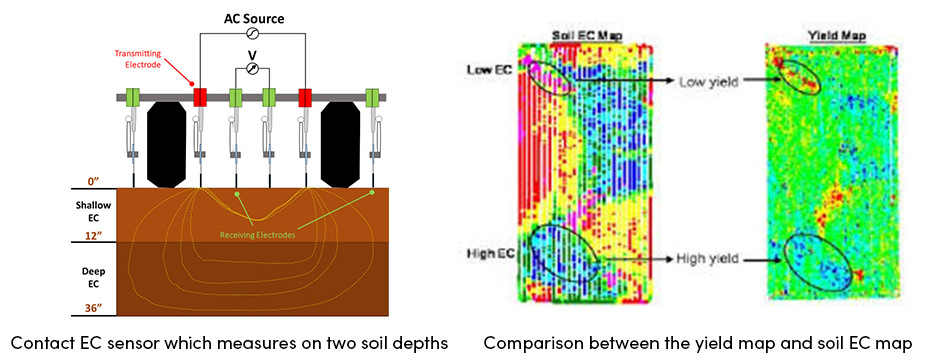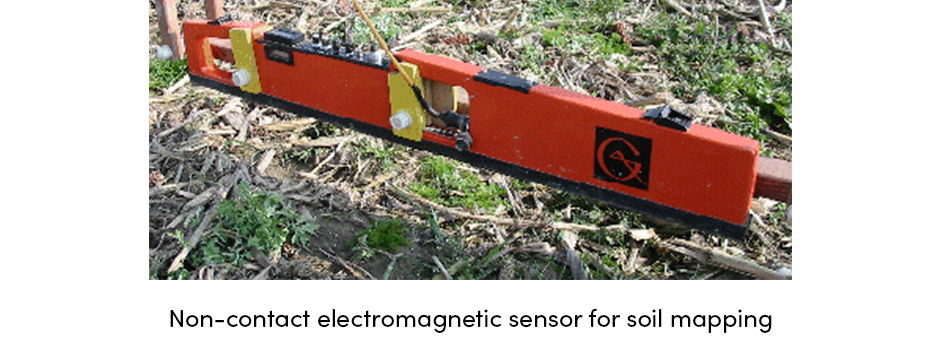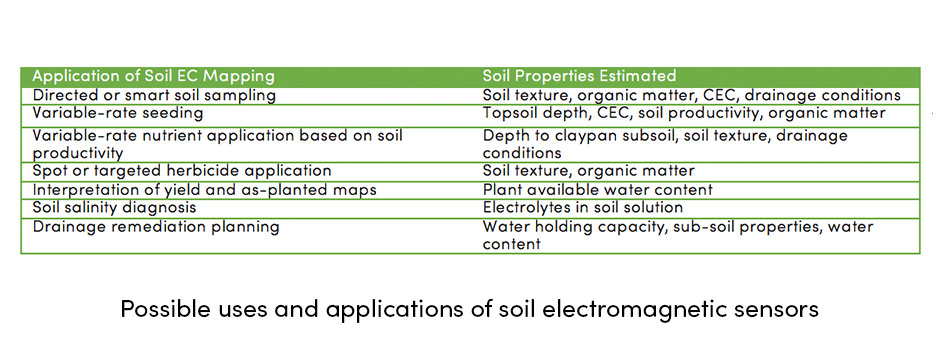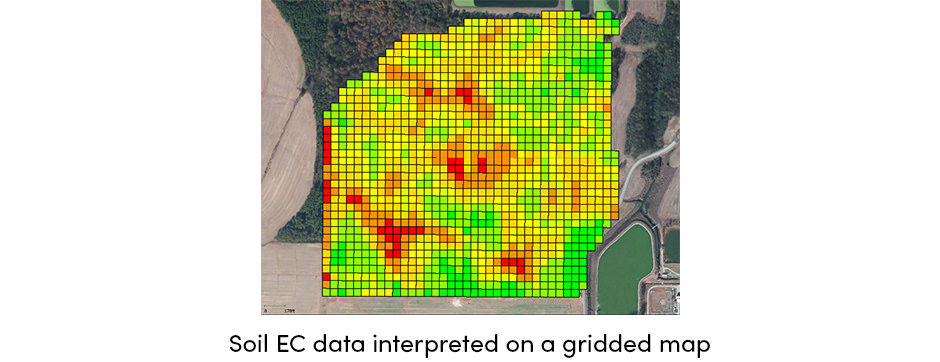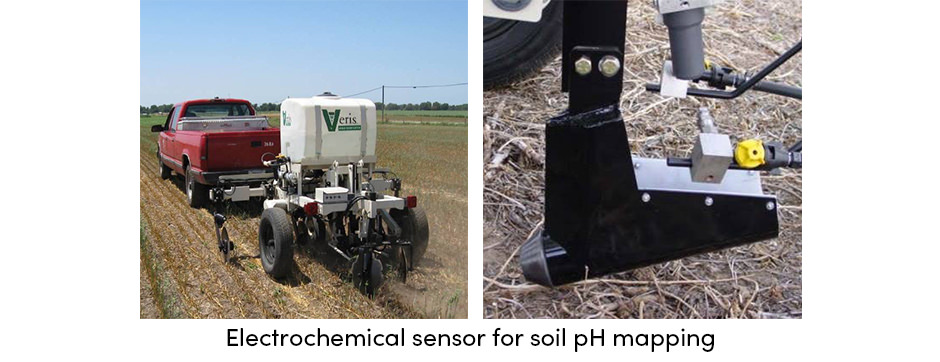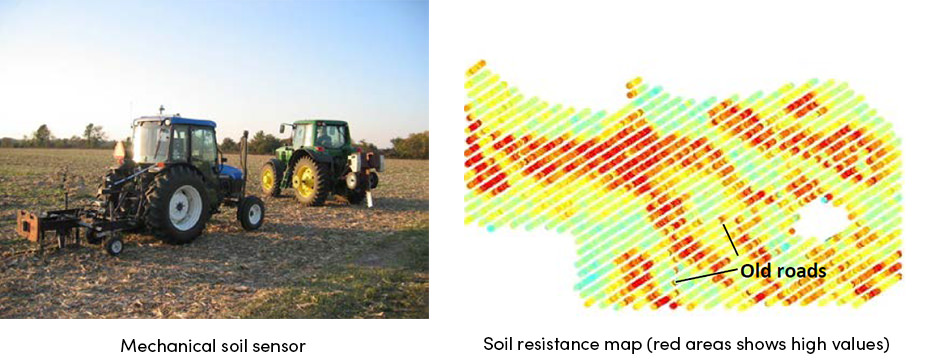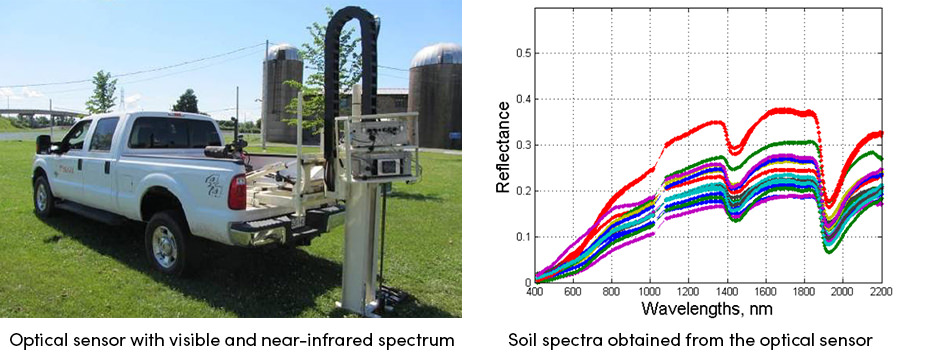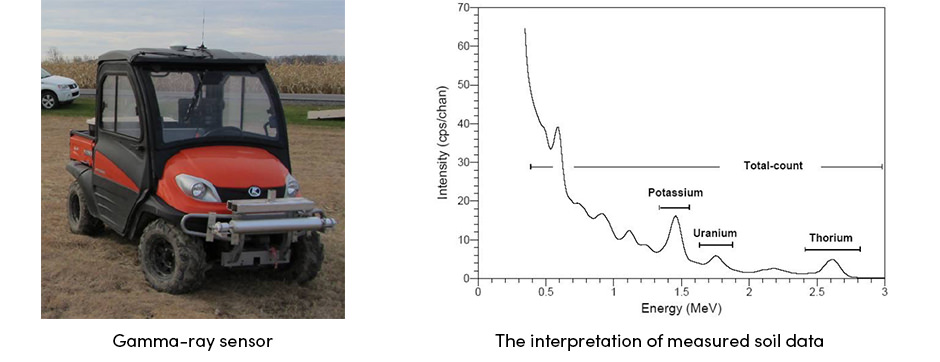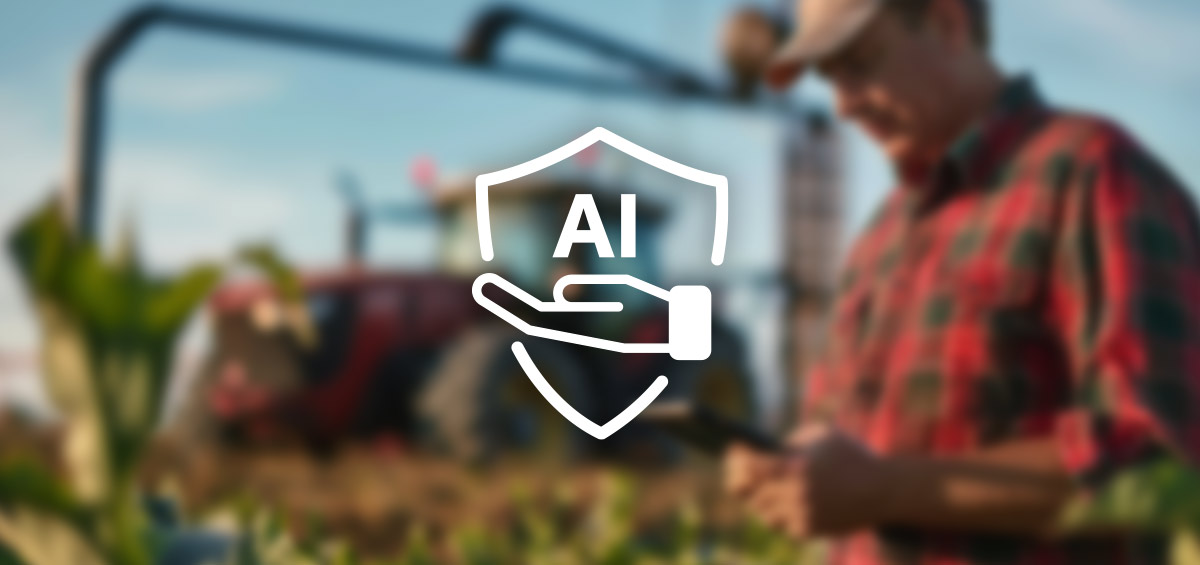Sensors are a modern agricultural technology, developed to help farmers obtain faster and better results, assisting in the determination of various soil characteristics. They can be used to measure in real-time thus controlling the variable rate application. It can also be used on-the-go, generating soil maps in conjunction with a GPS.
These vehicle-based sensors are located in the front of the tractor or attached on its implement, in direct contact with the soil or near its surface. As the tractor passes over the field, the sensor collects data, processes it, and interprets on a soil map, thus providing multiple layer information regarding the soil. In the case of real-time sensors, collected and interpreted data leads to an instantaneous rate application change.
There are a few sensors used for soil mapping, which vary in the area of measurement technique for the measuring of soil characteristics. These include:
- Electromagnetic
- Electrochemical
- Mechanical
- Optical
- Airflow
Electromagnetic Sensors
Electromagnetic sensors measure the various components of soil properties that may affect crop productivity, such as soil texture, cation exchange capacity (CEC), drainage conditions, organic matter level, salinity, and subsoil characteristics. The sensors use electric circuits to measure the capability of soil particles to conduct or accumulate electrical charge.
Electromagnetic sensors measure soil EC by using two methods: contact and non-contact.
The contact method uses electrodes which penetrates into the soil. The sensor is installed on a device and pulled by a tractor or vehicle which is equipped with a GPS receiver. It’s a widely used soil measuring method due to its ability to provide a precise mapping of the whole field. The only disadvantage is that it is not suitable for too large or too small fields.
The non-contact method uses electromagnetic induction (EM) which does not make physical contact with the soil. The sensor is usually installed on the opposite side of a vehicle or a tractor and equipped with a GPS receiver.
Depending on the technique used, electromagnetic sensors can be divided into:
- sensors for mapping electrical conductivity
- sensors for mapping transient electromagnetic response
- sensors which adjust various rate application in real-time
Measured soil EC has no direct effect on crop growth or yield. However, based on a measured soil data, a farmer can easily determine specific soil properties which may affect the crop yield.
Interpretation of an EC Soil Map
The EC soil map can be interpreted in two ways;
- by comparing it to other maps of the same field (e.g. soil characteristics map)
- by dividing it into grid cells and comparing the average of one cell with the value of the same cell on the map
Electrochemical Sensors
Electrochemical sensors are used to measure the most important soil characteristics for precision management; soil nutrient levels and pH. It’s a great replacement for standard chemical soil analysis, which is expensive and takes more time to get the results.
These sensors use an ion-selective electrode (ISE) or an ion-selective field effect transistor (ISFET) to measure the voltage between the sensing and reference part of the system related to the concentration of specific ions (H+, K+, NO3-). The soil sampling mechanism scoops a soil sample and brings it in contact with the electrode. After a stable reading is measured, the electrode is rinsed before the next reading.
Mechanical Sensors
Mechanical sensors are used to estimate soil mechanical resistance (compaction) as related to the variable level of compaction. These sensors use a mechanism that penetrates or cuts through the soil and records the force measured by strain gauges or load cells.
When a sensor moves through the soil, it registers resistance forces arising from the cutting, breaking, and displacing of soil. Soil mechanical resistance is measured in a unit of pressure and represents the ratio of the force required to penetrate the soil medium to the frontal area of the tool engaged with the soil.
Optical and Radiometric Sensors
Optical sensors measure the reflectance, absorption, or transmittance characteristics of the soil. They use light reflectance to measure soil organic matter, soil moisture, mineral composition, clay content, soil color, organic carbon, pH, and cation exchange capacity.
Sensors determine the soil’s ability to reflect light in different parts of the electromagnetic spectrum. Changes in wave reflections may indicate changes in soil density or restrict soil layers.
Optical sensors use the combination of four different wavelengths to measure certain soil characteristics; ultraviolet (100-400 nm), visible (400-700nm), near-infrared (700-2500 nm) and mid-infrared (2500-25000 nm) wavelengths. Ultraviolet wavelengths are used in combination with visible spectra to determine inorganic minerals (iron oxide) in the soil.
Radiometric sensors use the gamma-ray spectrometer to measure the distribution of the intensity of gamma (γ) radiation versus the energy of each photon. There are two types of radiometric sensors; active and passive. Active γ-ray sensors use a radioactive source to emit photons of energy that can then be detected using a γ-ray, while passive sensors measure the energy of photons emitted from naturally occurring radioactive isotopes of the element from which they originate.
Measured data is compared to the isotopes of potassium, uranium, and thorium in the soil, where the intensity of γ-ray is related to the elemental content in the soil.
Airflow Sensors
Airflow sensors measure soil air permeability, i.e. the pressure required to squeeze the given volume of air into the soil at the fixed soil depth.
Acoustic and Pneumatic Sensors
Acoustic sensors are used to measure soil texture (sand, silt, clay), soil bulk density (compaction), and soil depth variability (depth of topsoil, depth to hardpan). They work by measuring the change in noise level due to the interaction of a tool with soil particles.
Pneumatic sensors measure soil-air permeability, which is the pressure required to force a given volume of air into the soil, at a certain depth. The measured data is compared to soil properties such as soil structure and compaction.
Both acoustic and pneumatic sensors are a good alternative to mechanical sensors.
Soil productivity is limited by many different factors such as soil type, texture, organic matter content, and moisture. Therefore, there is a need to measure soil characteristics more accurately in order to make successful, data-driven decisions. Inadequate soil samplings and high cost are the main reasons to make a revolutionary change in farming, by using sensors.
A sensor detects events or changes in soil characteristics and provides a corresponding output, indicated through an electrical or optical signal. Sensors can both improve the quality and reduce the cost of laboratory soil analysis, as well as improve crop management and overall crop production.
